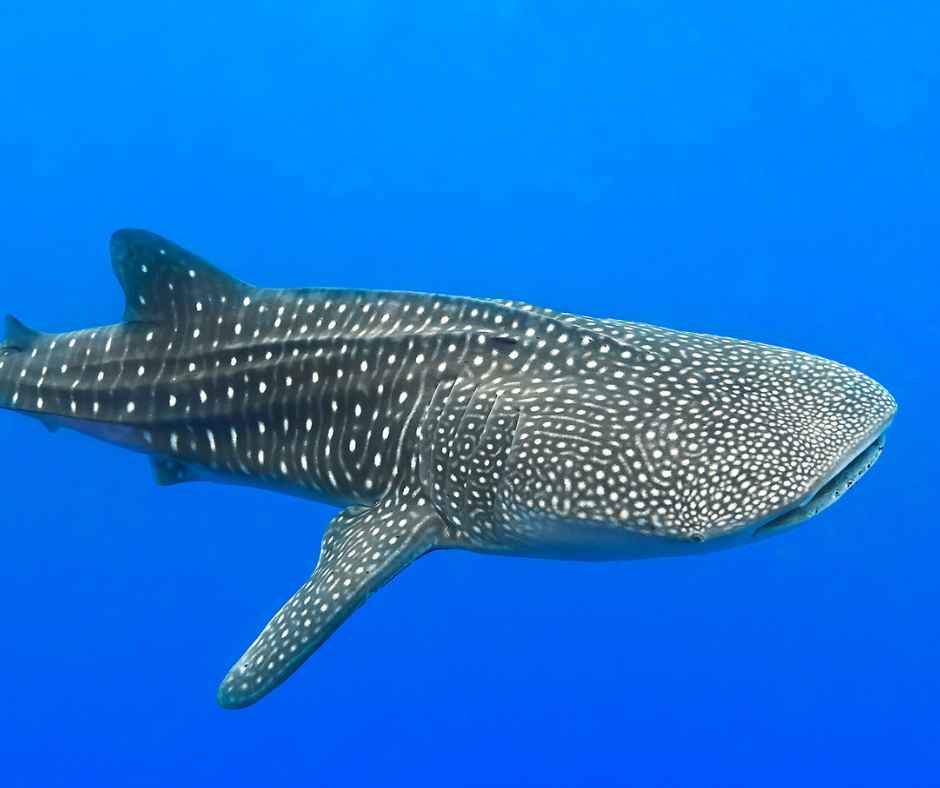Sharks belong to the class Chondrichthyes, which also includes batoid and skates. Sharks are ancient creatures that have been around for over 400 million years. With many body parts similar to other fishes, scales set sharks apart. But what is so unique about these scales? And why do sharks have scales in the first place? Let’s dig into the topic in detail today.

Shark Scales: Structure and Composition
Sharks have scales like other fishes. They are an important part of the fish’s body. But what are these scales called? The unique organs are named dermal denticles. They come under one of the four major categories of scales, called leaf-shaped placoid scales. The other three are the Ctenoid, Cycloid, and Ganoid scales.
Dermal denticles grow out of the dermis layer of the skin. They have a material called dentin in their compositions. For example, the scales’ inner cavity of pulp and a protective enamel is made from it. Dentin is similar to the substance that makes up human teeth.
Further, two important qualities of the sharks’ scales may make them unique. They are as follows;
- having small size
- possessing tooth-like structures
Their tooth-like shape makes them more durable than traditional fish scales. Moreover, the dermal denticles are typically smaller on the shark’s belly while larger on its back and sides.
Also, an interesting fact: if you were to pet a shark from head to tail, it would feel slick and smooth. But the scales would be abrasive if you were to rub against a shark from tail to head. They could even cause a laceration.
Functions of Shark Scales
Why do sharks have scales? The answer to the query lies in dermal denticles’ functions. They serve the following significant functions;
Protection
Protection is one of the crucial functions of the shark’s scales. They provide a tough, abrasion-resistant surface to the fish. That, as a result, helps to protect the shark’s skin from damage.
This function is especially significant for cartilaginous fish living in rough coral or rocky bottom environments. That’s because they are constantly exposed to abrasive surfaces in such a habitat.
In addition, the dermal denticles are thicker on certain areas of the shark’s body where the skin is more likely to be damaged, such as the head and dorsal fin. However, the added scale thickness helps protect these areas from injury.
Hydrodynamics
Why do sharks have scales? Its hydrodynamics is one of the answers.
The sharks’ scales are arranged in a specific pattern; they are smaller on the belly and larger on the back and sides. Thus, this arrangement of dermal denticles creates a smooth, streamlined surface that reduces water resistance on the shark’s body. Hence, allowing it to swim faster.
In addition, fast movement aids cartilaginous fish in hunting and avoiding predators. Finally, the scales are set at a specific angle, creating a turbulent boundary layer of water on the shark’s skin, further reducing the drag.
Camouflage
Camouflage is another function of sharks’ scales. Because of the pattern in which these scales are arranged, they camouflage the shark by making its skin appear smoother and less visible to prey.
Interestingly, the shark’s skin color can also change depending on the environment. This effect is known as countershading. It makes the shark’s belly match the color of the sunlight coming from above. As a result, its back matches the color of the ocean floor, making it less apparent.
Moreover, the scales can also reflect light differently. For example, some sharks have specialized scales called dermal flaps. They are small flap-like scales that can open and close. These flaps can be used to control the amount of light that is reflected by the shark’s skin. That, consequently, helps to camouflage the cartilaginous fish further.
Sensory Function
Some species of sharks have specialized scales on their fins and tails. They are called lateral line scales. These scales contain sensory cells that help the shark to detect vibrations in the water.
These sensory cells are called lateral line neuromasts. They are sensitive to movement and pressure changes in the water. Because of these cells, the shark detects the presence of prey or predators even when they are not in sight.
The lateral line system is vital for the cartilaginous fish that hunts in low-light conditions or murky water.
Defense
The tooth-like structure of the scales can be used as a defense mechanism when sharks face danger from predators. For instance, some shark species, such as the sand tiger shark, have huge and sharp scales, helpful to deter predators.
Even the small shark species have tough scales. Thus, they can also act as a shield against small predators.
Moreover, some sharks have specialized scales on their fins and tail. They are called dermal thorns. These scales are even more pronounced and help inflict injury on predators that try to bite or attack the fish.
The Misconception About Sharks’ Scales

People usually get confused about whether the cartilaginous fish has scales. At times, they may wonder and ask, do all sharks have scales? Many may think that sharks don’t have any. Hence, the following are three potential reasons for this misconception;
- Firstly, because the scales of sharks have a different size than those of bony fish, people may assume the former has none. Bony fish have scales that are larger and more visible. But sharks’ scales are smaller and less noticeable.
- Also, the scales of bony fish continue to grow as the fish grows. However, the sharks’ scales stop growing. Instead, new scales fill in to create a smooth and streamlined surface. Thus, these structural differences can lead people to believe sharks do not have scales.
- Finally, because dermal denticles are smaller, people may confuse them with the fish’s skin. Located on the exterior of a shark’s body, both skin and scales give the fish a physical appearance. Hence, it contributes to the misconception that the cartilaginous fish doesn’t have scales. Eventually, people end up asking, do sharks have scales or skin? Nonetheless, both are different parts of the fish’s body with distinct qualities.
Similarly, people may have assumptions about rays too. For example, they may ask, do rays have scales? That’s because rays belong to the same class of fish as sharks, and both have the same kind of scales. Therefore, misconceptions about rays’ dermal denticles’ are plausible.
Interestingly, sharks and rays are not alone in these misconceptions. Dolphins are also possibly affected by them. Nonetheless, in contrast to cartilaginous fishes, the assumptions – regarding scales – surrounding dolphins are different.
In the former’s case, people may assume they don’t have scales. But in the latter’s case, people may think the answer to do dolphins have scales is in the affirmative. But that’s not the actual case.
Dolphins are mammals, not fish, so they do not have scales. Regardless, because specific skin characteristics of dolphins resemble fish scales, people may assume they have scales. Nonetheless, this topic needs to be discussed in more detail in a separate blog.
Lastly, studying dermal denticles was interesting because it cleared many misconceptions about them and uncovered their uniqueness. Moreover, why do sharks have scales is no more confusing as we now have a detailed understanding of their functions. Hence, our work was worthwhile.
Also Read
Do Sharks Have Scales? Yes | Know Interesting Applications – Petyfied
